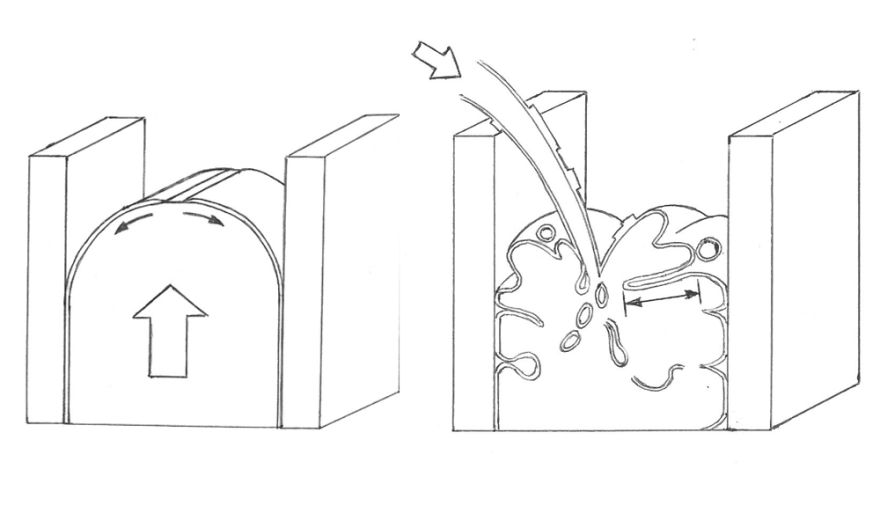Don’t crack up!
Published: | Casting

 Professor John Campbell FREng OBE is one of the world’s leading experts within the casting industry, having produced around 150 papers, as well as holding 20 patents. He holds two Master’s Degrees from Cambridge and Sheffield Universities, as well as two doctorates from the University of Birmingham where he is chair of casting technology. He is also a fellow of the prestigious Royal Academy of Engineering.
Professor John Campbell FREng OBE is one of the world’s leading experts within the casting industry, having produced around 150 papers, as well as holding 20 patents. He holds two Master’s Degrees from Cambridge and Sheffield Universities, as well as two doctorates from the University of Birmingham where he is chair of casting technology. He is also a fellow of the prestigious Royal Academy of Engineering.
At the recent First Friday Editors’ Club in London, Professor Campbell explained his ten rules for casting manufacture and how to eliminate cracks:
- Start with a good melt:
Immediately before casting, the melt should be prepared in conformance with an acceptable minimum standard. Prepare and use, as far as possible, only near-defect-free melt. A good quality liquid melt is one that is defined as follows –
Substantially free from suspensions of non-metallic inclusions in general and bi-films in particular. Relative freedom from bi-film straightening and bi-film opening agents. These include certain alloy impurities in solution, such as Fe in Al alloys and hydrogen or other gases. However, it should be noted that Si can precipitate in its primary form as a bi-film straightening element and is therefore inescapable when using modified Al-Si alloys, but is avoided in modified alloys.
- Avoid turbulent entrainment of the surface film on the liquid
This is the requirement that the liquid metal front (the meniscus) should not go too fast. Maximum meniscus velocity is approximately 0.5 m/s for most liquid metals. This requirement also implies that the liquid metal must not be allowed to fall more than the critical height corresponding to the height of a sessile drop of the liquid metal. The maximum velocity may be raised to 1.0 m/s or even higher, and the critical fall height might be correspondingly raised to 50 mm, in sufficiently constrained running systems or thin section castings.
- Avoid laminar entrainment of the surface film on the liquid
This is the requirement that no part of the liquid metal front should come to a stop before the complete filling of the mould cavity. The advancing liquid metal meniscus must be kept “alive” (moving) and therefore free from thickened surface film that may be incorporated into the casting. This is achieved by the liquid front being designed to expand continuously. In practice, this means progress only uphill in a continuous uninterrupted upward advance (in the case of gravity-poured casting process, from the base of the sprue onwards).
This implies –
- Only bottom gating is permissible
- No falling or sliding downhill of liquid metal is allowed
- No horizontal flow of significant extent
- No stopping of the advance of the front due to arrest of pouring of waterfall effects etc.
- Avoid bubble damage
No bubbles of air entrapment by the filling system should pass through the liquid metal in the mould cavity. This may be achieved by –
- Properly designed offset step pouring basin; fast backfill of properly designed sprue; preferred use of stopper
- Avoidance of the use of wells and all other volume-increasing features of filling systems (such as expanding channels sometimes known as diffusers; small volume runner and/or use of ceramic filters close to the sprue/runner junction; possible use of bubble traps. A naturally pressurised filling system fulfils most of these criteria.
- No interruption in pouring
- Avoid core bubbles
- No bubbles from outgassing of cores of moulds should pass through the liquid metal in the mould cavity. Cores to be demonstrated to be sufficiently of low gas content and/or adequately vented to prevent bubbles from core blows.
- No use of impermeable clay-based core or mould repair paste.
- Avoid shrinkage
- No feeding uphill in larger section thickness castings. Feeding against gravity is unreliable because of adverse pressure gradient and complications introduced by convection.
- Demonstrate good feeding design by following all seven Feeding Rules, by an approved computer solidification model and by test castings.
- Once good feeding is attained, fix the temperature regime by controlling the level of flash at mould and core joints, as well as mould coat thickness, if any, and temperatures of metal and mould.
- Avoid convection
Avoid the freezing time in relation to the time for convection in order to avoid causing damage. Thin and thick section castings automatically avoid convection problems. For intermediate sections, either reduce the problem by avoiding convective loops in the geometry of the castings and feeding/gating system, avoid feeding uphill, or eliminate convection by rollover after filling.
- Reduce segregation
Predict segregation to be within limits of the specification, or agree out-of-specification compositional regions with the customer. Avoid channel segregation formation if possible.
- Reduce residual stress
No quenching into water (cold or hot) following solution treatment of light alloys. Polymer quenchant or forced air quench may be acceptable if casting stress can be shown to be acceptable.
- Provide location points
All castings to be provided with location points for pickup for dimensional tracking and machining. Proposals are to be agreed with a quality auditor, machinist and other concerned departments.
John Campbell
Professor Emeritus
University of Birmingham
Tel: 07802 408347
Email:
Quick Links
Telephone
Published By
Roger Barber Publishing
4 Mayfair Court
Cleethorpes
South Humberside
DN35 0QG
© Copyright Roger Barber Publishing , all rights reserved.
Terms and Conditions apply. This website uses cookies, click here for blocking details. Our Privacy Policy is available here.

